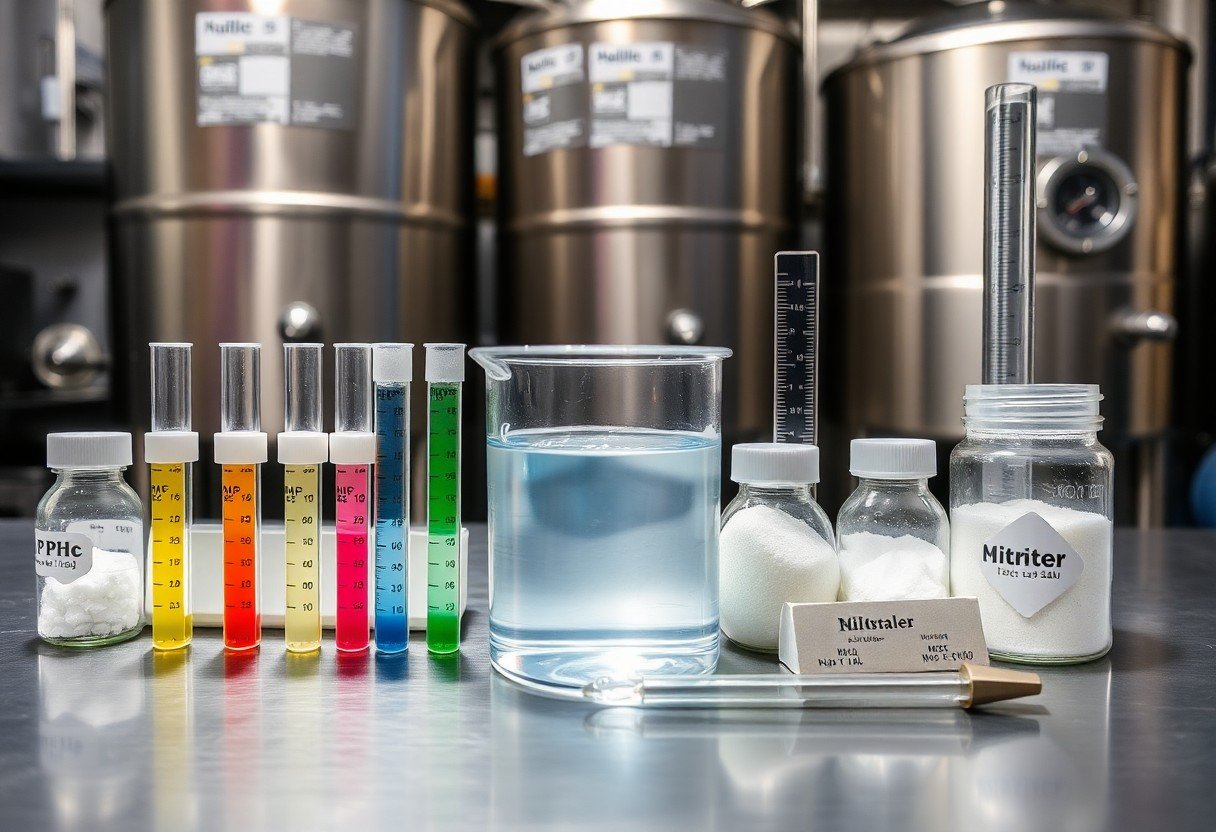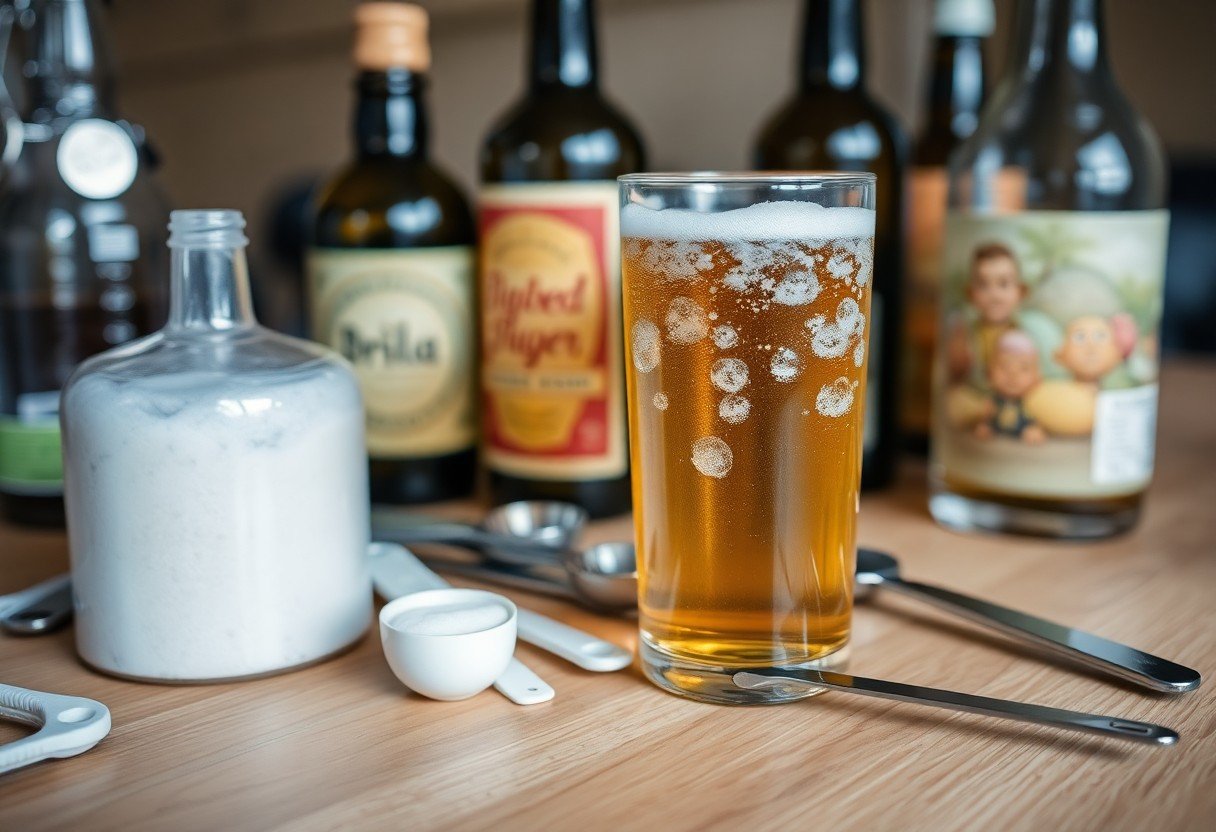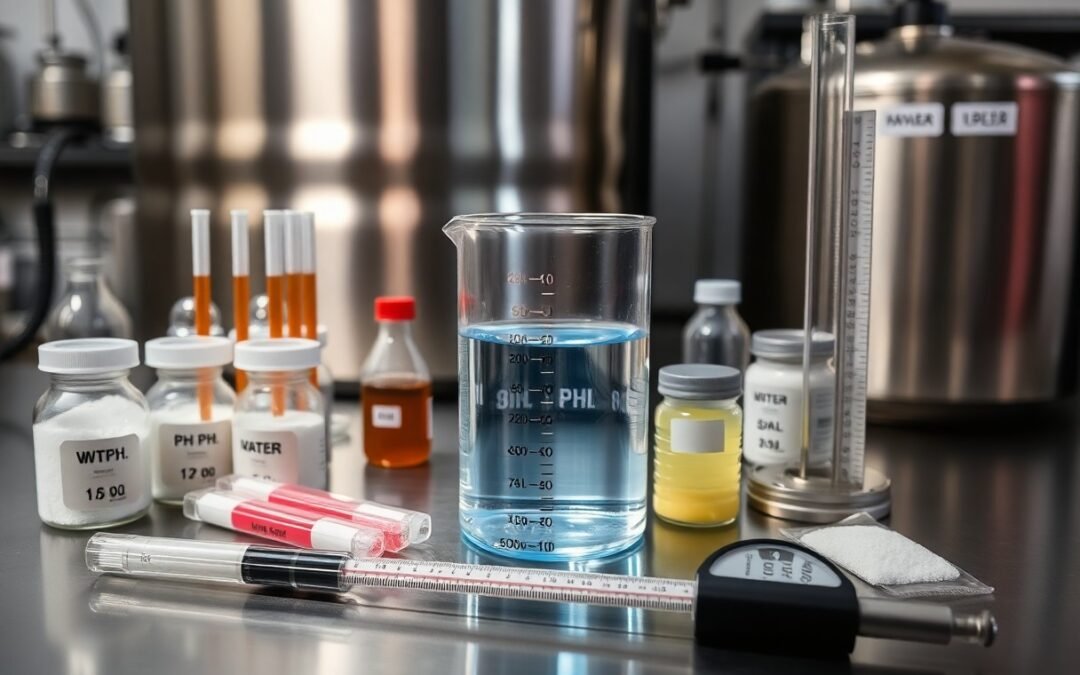It’s necessary to understand the myriad factors that influence the art of home brewing, particularly if you aim for that elevated flavor profile. Your choice of ingredients, fermentation techniques, and brewing equipment play pivotal roles in achieving the perfect balance. By mastering the variables of temperature, timing, and water chemistry, you can significantly enhance your brewing process, leading to a more harmonious and satisfying drink. This post probes into these elements to help you refine your craft and elevate your home brew experience.
The Crucial Role of Ingredients in Flavor Profile
Flavor profiles in home brews hinge significantly on the ingredients you select, impacting aroma, taste, and mouthfeel. Each component, from grains to hops, contributes distinct characteristics that can elevate your brew. Quality ingredients combined thoughtfully can create complex layers of flavor, while poor choices may lead to an unbalanced or bland result. Focus on sourcing high-quality components to unlock the full potential of your brewing ambitions.
Essential Grains: Selecting the Right Base
The foundation of your beer lies in the grains you choose. Base malts, such as Pale or Pilsner, provide fermentable sugars and determine the color and body of your brew. Specialty grains like Crystal or Munich enhance flavor nuances, contributing sweetness, nuttiness, or caramel notes. Experimenting with different combinations allows you to tailor the malt profile, ensuring your beer achieves the desired taste and complexity.
Hop Varieties: Crafting Aromatic Complexity
Hops bring depth and complexity to your brew, providing bitterness that balances sweetness and an array of aromas. Choosing the right hop varieties affects not just bitterness levels but also the floral, citrus, or pine characteristics in your beer. Varieties like Cascade lend brightness, while Amarillo adds orange notes. By layering hops during the brewing process—adding some early for bitterness and others towards the end for aroma—you can craft a truly unique flavor experience.
Consider the timing of hop additions in your brewing process. Early additions (60 minutes) contribute primarily to bitterness, while late additions (15 minutes or less) enhance aroma and flavor. Dry hopping, adding hops during fermentation, can further elevate your beer’s aroma profile. Popular varieties, like Citra, impart strong citrus and tropical fruit notes, while Simcoe offers earthy and pine characteristics. Experimenting with combinations allows you to create signature brews with layered aromatic complexity and satisfying bitterness. Always adjust quantities based on your desired profile and the style you’re targeting.
Precision Temperature Control: The Unsung Hero
Temperature precision can significantly enhance your brewing process, determining the flavors and aromas that emerge in your final product. Through careful monitoring, you can create an optimal environment for your ingredients, leading to a homebrew that truly stands apart.
Temperature Control Elements
| Element | Description |
|---|---|
| Heating Equipment | Quality heating systems ensure consistent temperature throughout the brewing process. |
| Thermometers | Accurate thermometers allow for precise temperature monitoring at different stages. |
| Insulation | Proper insulation helps maintain steady temperatures during mashing and fermentation. |
Mash Temperature: Unlocking Sugar Potential
Mash temperature directly impacts the enzymatic processes converting starches into sugars. Targeting a specific range not only maximizes sugar extraction but also influences the body and sweetness of your brew.
Mash Temperature Variables
| Temperature Range | Effect |
|---|---|
| 148-152°F | Produces a sweeter, fuller-bodied beer. |
| 156-162°F | Encourages a drier finish with more fermentable sugars. |
Fermentation Temperature: Influencing Yeast Behavior
Fermentation temperature largely dictates yeast activity and the overall profile of your beer, from esters to phenols. By controlling this variable, you guide yeast towards specific flavor profiles, enhancing your homebrew’s complexity.
Fermentation Temperature Insights
| Temperature Range | Yeast Behavior |
|---|---|
| 60-65°F | Promotes clean, crisp flavors with minimal phenolic character. |
| 68-72°F | Encourages fruity esters and spicy phenols, adding depth to the brew. |

Water Chemistry: The Foundation of Brew Quality
Your brew’s quality starts with the water you use, as its composition directly affects the overall flavor and mouthfeel of your beer. Each element in water, from sulfates to chlorides, can bring distinct characteristics to different styles, making it vital to consider your water chemistry. By adjusting these properties, you can enhance the optimal attributes of your chosen beer style, ensuring that the final product resonates with your desired profile.
Understanding pH Levels and Mineral Content
pH levels play a significant role in the extraction of flavors during the brewing process, influencing the efficiency of enzymatic reactions. Aiming for a pH around 5.2 to 5.5 in the mash helps achieve optimal results. Additionally, mineral content, such as calcium, magnesium, and bicarbonate, can modify body and flavor. For instance, higher calcium levels enhance yeast performance, while specific minerals can emphasize maltiness or hop bitterness.
Tailoring Water Profiles for Specific Styles
Each beer style benefits from distinct water profiles that can enhance flavor complexity and mouthfeel. For example, pale ales thrive in water rich in sulfate, amplifying hop bitterness, while stouts often require higher chloride levels to promote a smoother, maltier taste. By analyzing the traditional water sources of specific beer styles, you can replicate those profiles to achieve authentic results in your home brewing.
To replicate traditional water profiles, consider local water sources associated with famous brewing regions. For instance, Burton-on-Trent in England is known for its high sulfate content, perfect for creating robust IPAs. Conversely, Dublin’s soft water enhances the attributes of stouts. Testing your water and using salts to adjust its profile can elevate your brew to match these historic benchmarks, allowing you to create beers that not only taste great but also stay true to their style roots.
Yeast Selection: The Microbial Catalyst
Your choice of yeast acts as the heart of your brew, influencing fermentation outcomes and the overall character of your beer. Each strain brings its own unique properties to the table, affecting everything from fermentation speed to alcohol tolerance. Selecting the right yeast isn’t trivial; it’s fundamental in driving the specific aromatic and flavor profiles that make your home brew distinct.
Strain Differences: Impact on Flavor and Aroma
Fermentation Time: Allowing Character Development
Fermentation duration impacts not only flavor but also the mouthfeel and overall experience of drinking your beer. Many styles benefit from extended fermentation, allowing unwanted compounds to settle while desirable flavors evolve. For example, a pale ale might develop hoppy clarity over a two-week fermentation, while a stout could benefit from an extended period, encouraging chocolate and coffee notes to bloom. Monitoring gravity and taste throughout this process is crucial in guiding the development to enhance your brew’s final profile.

Carbonation Strategies: The Final Touch
Perfecting carbonation can elevate your home brew, enhancing its overall flavor and mouthfeel. Whether opting for natural or forced methods, understanding carbonation levels gives you the power to tailor each batch to your preference. Implementing the right strategy ensures that your brew presents an appealing texture and vibrant effervescence, contributing to a fully rounded drinking experience.
Natural vs. Forced Carbonation: Pros and Cons
Pros and Cons
| Natural Carbonation | Forced Carbonation |
|---|---|
| Enhances flavor through fermentation | Quick and controllable results |
| Less equipment required | Consistent carbonation levels |
| Eco-friendly process | Fewer risks of over-carbonation |
| Traditional technique | No additional sugars needed |
| Complexity and timing can add character | Requires CO2 tank and regulator |
| Longer fermentation time | Initial cost can be high |
| Less precision | May lack the depth of natural carbonation |
| Potential for haze if not handled correctly | Risk of gas loss if not sealed properly |
| Requires careful monitoring | Quick adjustments for corrections |
Carbonation Levels: Balancing Mouthfeel and Taste
Achieving the right carbonation level affects not only the beer’s mouthfeel but also its aromatic profile and taste perception. Typically measured in volumes of CO2, a range between 2.2 to 3.5 volumes suits various styles. Lighter styles like pilsners benefit from higher carbonation for a crisp finish, while stouts shine with lower carbonation to emphasize their rich mouthfeel. Adjusting carbonation also influences carbonation’s role in releasing aromas, enhancing the overall drinking experience.
Summing up
Upon reflecting, you will find that the harmony of an elevated home brew is determined by several sublime variables, including ingredient selection, temperature control, and fermentation duration. Each element plays a significant role in defining the flavor profile and overall quality of your brew. By mastering these variables, you enhance your brewing experience and create beverages that not only meet your tastes but also impress others. Continuously experimenting and fine-tuning these factors helps you achieve the perfect balance that elevates your home brewing to new heights.
FAQ
Q: What are the vital ingredients that influence the harmony of an elevated home brew?
A: The vital ingredients include water quality, malt types, hops, yeast strain, and fermentables. Each contributes unique flavors and characteristics, impacting the overall harmony of the brew.
Q: How does water quality affect the outcome of home brewing?
A: Water quality influences pH levels, mineral content, and overall taste. Soft water may enhance certain flavors, while hard water can add more bitterness or body to the brew.
Q: In what ways do different malt types contribute to brewing harmony?
A: Different malt types provide varying levels of sweetness, color, and body. Base malts offer fermentable sugars, while specialty malts contribute unique flavors like caramel, chocolate, or roasted notes.
Q: What role do hops play in achieving balance in a home brew?
A: Hops provide bitterness to balance sweetness from malts and impart aromatic and flavor characteristics. The choice of hop variety and timing during brewing can dramatically influence the final product.
Q: How does the yeast strain selected for fermentation impact the brew’s overall profile?
A: The yeast strain determines fermentation speed, alcohol content, and flavor profile. Different strains produce varying esters and phenols, influencing the aroma and taste harmony of the brew.

